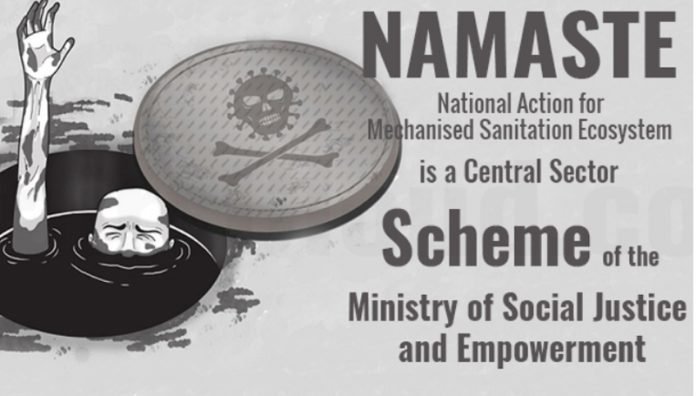In a significant step towards ensuring the safety and dignity of sanitation workers, the Ministry of Social Justice and Empowerment announced on Tuesday that 66,961 sewer and septic tank workers across 34 states and Union Territories have been identified for benefits under the National Action Plan for Mechanised Sanitation Ecosystem (NAMASTE).
Integration of State Data in Progress
Responding to a question in the Lok Sabha, Minister of State for Social Justice and Empowerment, Ramdas Athawale, stated that two states – Odisha and Tamil Nadu – are currently in the process of integrating their available data into the central NAMASTE database.
Safety and Welfare Measures
As per official data, a total of 45,292 Personal Protective Equipment (PPE) kits and 354 Safety Devices Kits for Emergency Response Sanitation Units have been supplied or ordered under the scheme. Furthermore, Ayushman health cards have been issued to 15,160 beneficiaries, ensuring medical security for workers engaged in hazardous sanitation work.
Financial Assistance for Rehabilitation
The government has also provided financial support under the NAMASTE scheme. A capital subsidy amounting to Rs 17.23 crore has been released to 599 sanitation workers and their dependents for sanitation-related projects, aiding in their rehabilitation and livelihood enhancement.
Objective of the NAMASTE Scheme
The NAMASTE scheme, launched in July 2023 by the Ministry of Social Justice and Empowerment in collaboration with the Ministry of Housing and Urban Affairs, aims to formalize and rehabilitate individuals engaged in the hazardous cleaning of sewers and septic tanks. By mechanizing sanitation work and offering financial and medical support, the government seeks to eliminate manual scavenging and improve the living conditions of workers.
With continuous efforts towards mechanized sanitation, the government is making strides in ensuring safer working conditions and securing the future of thousands of sanitation workers nationwide




